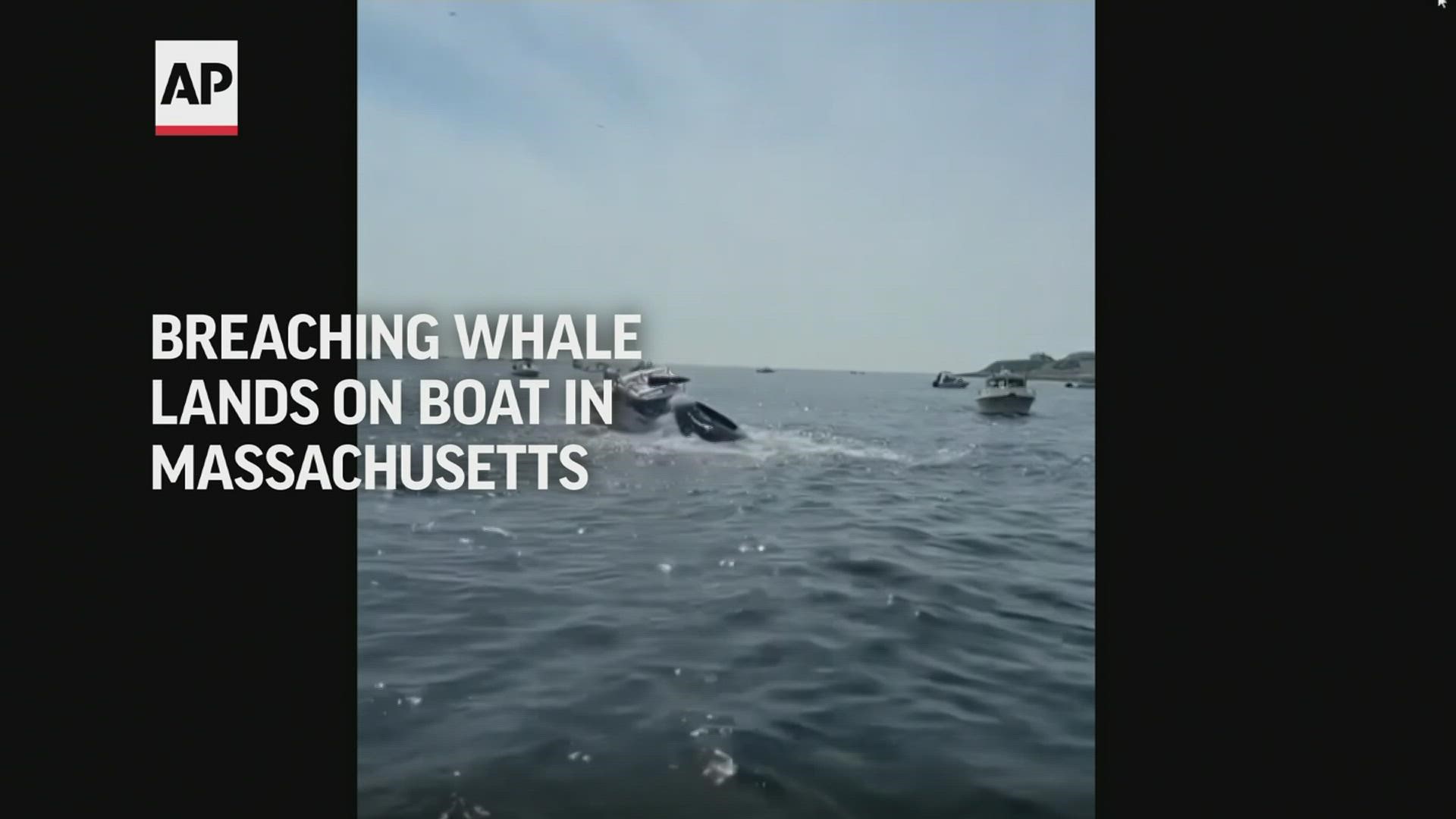CLEARWATER, Fla. — Around Christmas, Clearwater Marina Aquarium researchers spotted one of the world's most endangered large whales and its calf near Georgia. A few days later, they spotted four new mother-calf pairs near Florida.
The vital calving season for the North Atlantic right whale is currently underway and so far, as of Jan. 4, there have been nine sightings. The last week of December was an especially good week for sightings, according to Melanie White, the North Atlantic right whale conservation project manager and research biologist with CMA.
"This is a great trend, this is what we all hope to see. The trend desperately needs to continue. The population itself is so low, there are critically endangered species," White said. "Their population number estimate right now is about 340 for the entire species. And so, that number is extremely low.
"So every single calf is so vitally important."
Four teams from areas spanning from Virginia to Florida look out for females and their calves using aerial technology. The Florida Fish and Wildlife Research Institute posted a video on its Facebook page from Dec. 26 that showed a spotting of mother-calf pairs near St. Catherines Island, Ga.
The post explained researchers had been following the estimated 27-year-old right whale named "Smoke" with her calf through her southern migration journey.
"Prior to giving birth this season, Catalog #2605 ‘Smoke’ was sighted traveling south with #3503 ‘Caterpillar.’ The pair of adult females was spotted off Virginia by HDR working on a project under the U.S. Navy Marine Species Monitoring Program," FWC's post explained.
Not even a week after "Smoke" was spotted, FWC wrote on Dec. 29 that whales "Aphrodite," "Viola," "War" and their newborn calves were seen between 4-11 nautical miles off Amelia Island.
"These females last gave birth between 7-12 years ago," the post noted.
On Dec. 30, a named "Pilgrim" and her calf were spotted by beachgoers just offshore of Canaveral National Seashore, according to Clearwater Marine Aquarium's website.
According to NOAA, 20 newborns in a calving season would be considered a relatively productive year based on the current number of females. However, 50 or more calves are needed per year for multiple years to stop the decline and allow for recovery. Only 15 right whale calves were spotted during the 2021-2022 season.
"Their reproductive rate has really slowed," White said, in part. She explained there could be a multitude of reasons, like climate change, as reasons why the rate has slowed. "Their food supply is vitally important, the whales have to be healthy enough to be able to bring a calf to term," she noted.
White explained that the whales are having to go further north to find food, which could be taxing on their system.
"It's so important that these animals stay healthy and safe so that they have the capability to have these calves over the years," White said.
The coastal waters off Georgia and Florida are reportedly the only known calving area for the whales, and these waters were designated as the right whale critical habitat by National Oceanic and Atmospheric Administration Fisheries.
As of late December, the species still remains protected under the Endangered Species Act; White said, "Unfortunately, the general trend is still declining for the species, just based on the mortality rate of the animals, and then the actually calving interval rates and the production of calves are working against each other.
"So more whales are dying than are coming into the population by being born. So that number is on the decline," she said in part.
White explained that we need a lot of calves to be born to get this trend to reverse. White couldn't say for certain if the goal number of 20 calves would be reached this calving season, but she said, "This is a great start, but we just need this to continue."
For more information about the North Atlantic right whale, visit here.

